Mad Hedge Technology Letter
January 6, 2025
Fiat Lux
Featured Trade:
(DIGITAL SPORTS CONTENT RISES TO THE TOP)
(FUBO), (DIS)

Mad Hedge Technology Letter
January 6, 2025
Fiat Lux
Featured Trade:
(DIGITAL SPORTS CONTENT RISES TO THE TOP)
(FUBO), (DIS)

It isn’t a shocker that the first deal to go through in 2025 is in digital sports streaming.
This sub-sector is scorching hot.
It was only just a few days ago when Netflix rolled out its debut in streaming NFL during Christmas when they broadcasted 2 games.
Live American football – not the European variant - is the holy grail of digital content and the beefiest of marketers with the deepest of pockets will cough up to place their ads in these commercial slots.
Disney (DIS) will combine its Hulu + Live TV business with sports streamer FuboTV (FUBO) in the first major media dealmaking move of 2025.
Disney will control 70% of Fubo. Shareholders of the sports streamer will own the remaining 30% of the combined business, which will operate under the Fubo publicly traded company name.
Disney is struggling in many parts of their business, for example, is underperforming in their theme parks.
Their movies also suck.
Pro football is the last bastion of premium content and even the woke employees at Disney understand that.
Disney stock has essentially halved since 2021 with shareholders furious about their lack of strategic vision.
The acquisition of Fubo gives Disney a chance to restart in a sub-sector that has a glowing future.
Cord cutters are exploding and since last year’s Presidential election, the trust in legacy media has never been at such a low ebb, and rightly so with the poor level of content quality.
The combination of the two businesses will form one of the largest digital pay-TV providers as consumers search for cable alternatives amid increased cord-cutting.
Fubo, which offers users access to live TV channels over the internet, has primarily focused on sports.
Hulu + Live TV, categorized as a cable replacement option — similar to YouTube TV — allows users to stream from about 100 live TV channels across sports, news, and entertainment.
As a much smaller player, Fubo struggled with high content costs and the ability to curb subscriber churn and adequately compete in the marketplace — hence the lawsuit's inception.
The three companies first announced the joint venture last year, with an expected price point of $42.99 a month. The service will bring together their respective slates of sports rights and comes as media companies face pressure from investors to scale their streaming services and achieve profitability.
I’m not saying that digital streaming of pro sports is easy.
We aren’t in the early innings.
Content costs are astronomically high and subscriber churn can be a problem in the offseason.
The nightmare could end up like the NBA.
Look at sports like pro basketball (NBA, viewership is down 50% this season as subscribers flee the sinking ship.
The basketball commissioner created a model where most teams make the playoffs meaning the 82 game schedule has been deemed irrelevant causing their best stars to sit out games.
It’s just one example of the management of pro sports going down the drain and pro football isn’t immune to bad management too.
As it stands, I highly support Disney’s foray into Fubo and Fubo would be a great stock to pick up and hold at $4.80.
The stock is up from $1.44 this morning.
Live pro sports still fetches a premium and I don’t believe that will change any time soon.
Jump into tech stocks that have big investments planned in American football.
Much of the big growth opportunities have been saturated and I do believe the tech market will become more of a zig-zag trading market in 2025.
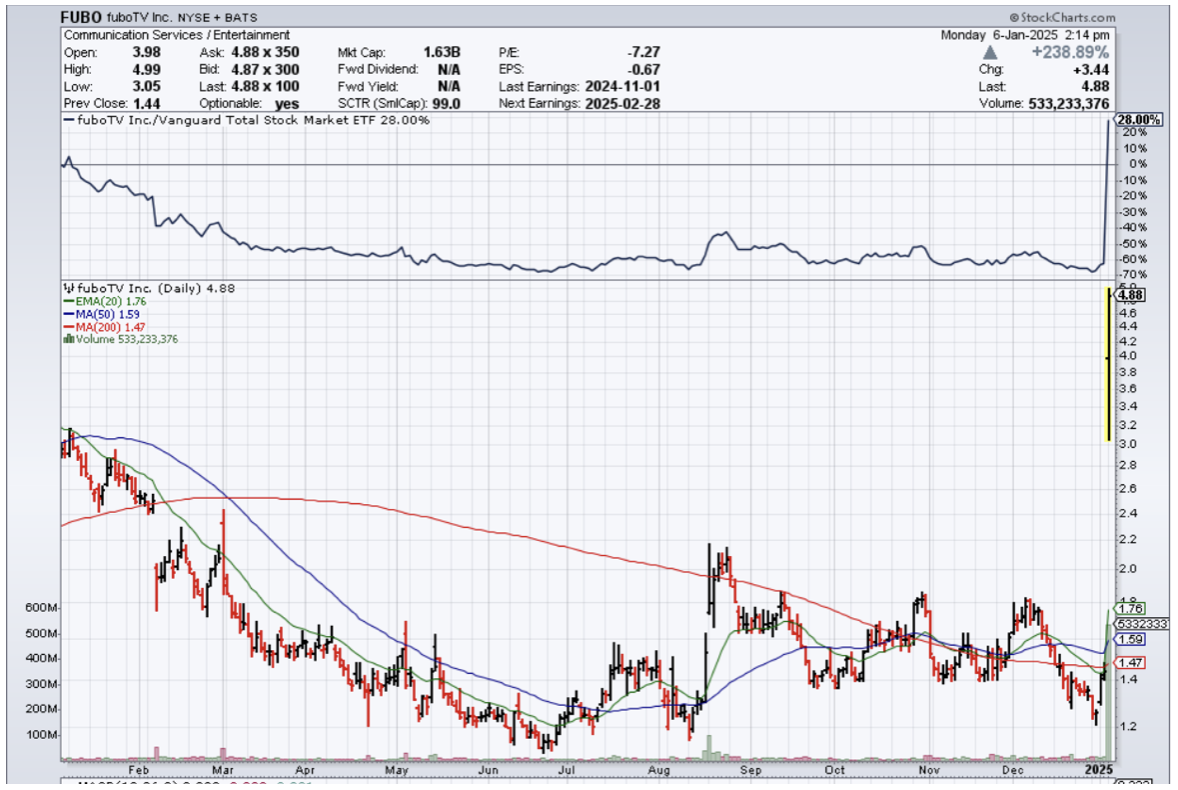
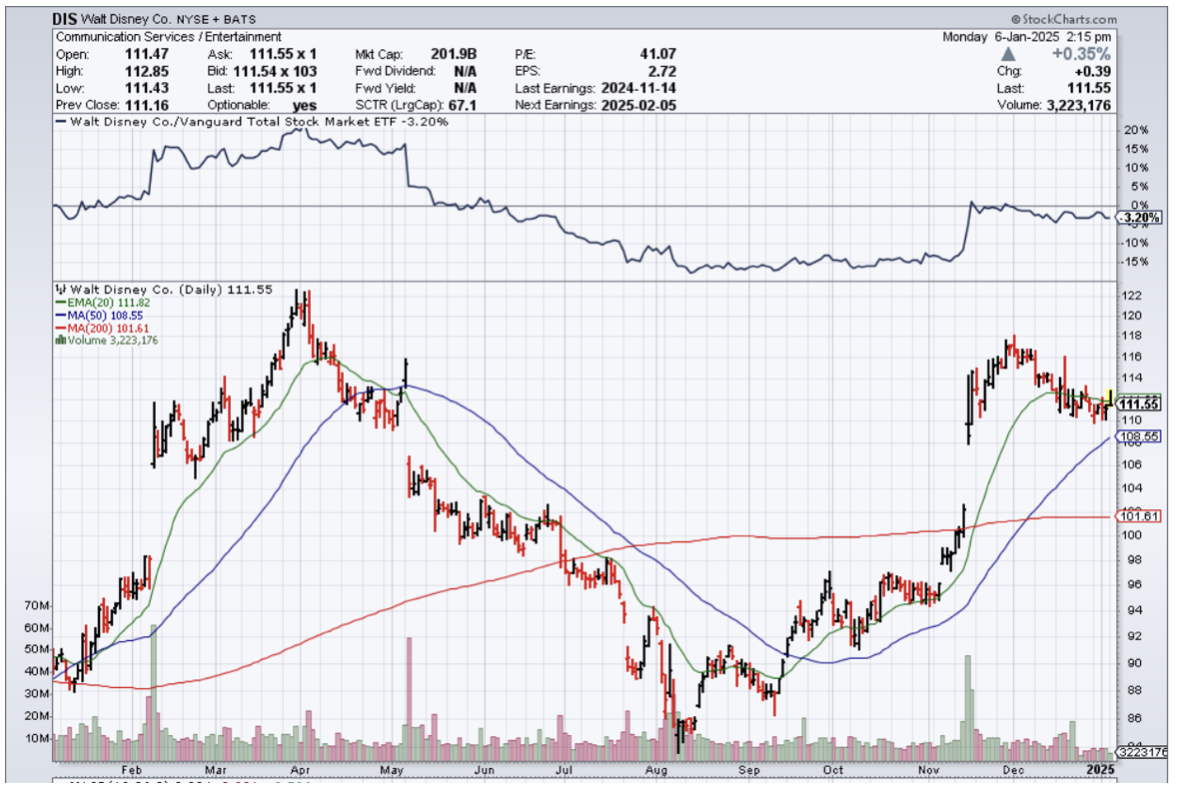
Mad Hedge Technology Letter
April 20, 2022
Fiat Lux
Featured Trade:
(PEAK EYEBALLS)
(DIS), (CURI), (ROKU), (PTON), (ZM), (WBD), (FUBO), (NFLX)

Online streamers now have no pricing power.
Remove jacking up prices from the equation and streamers like Netflix (NFLX) and Disney (DIS) look quite mediocre and that’s what the 35% drop in NFLX shares are telling us.
NFLX Ahh factor has vanished.
It used to be that they knew they could raise prices whenever they wanted and that tool in their kit kept investors on board.
CNN+’s dismal foray into pay tv was another red flag when owner Warner Bros. Discovery (WBD) decided to pull all marketing spend because of the paltry viewing results.
There’s just too much competition out there and instead of creating more leeway, growth was pulled forward the past 2 years, and now the chickens are coming home to roost.
Shelter-at-home stocks like Peloton (PTON) and Zoom (ZM) are now surplus to requirements.
It was just not that long ago, that fresh streaming TV options launched at a frenzied pace.
With many subscription services available, streaming entertainment became ubiquitous in U.S. homes as consumers spent large quantities of time and money on streaming media.
As economies reopen following the end of the health situation, and consumers spend more time outside of their homes, there still are just other things to do like going outside.
The idea that there are still many years of streaming growth lie ahead for the streaming industry has turned out to be an utter fallacy.
These are some tech companies impacted.
The much-anticipated Disney+ streaming service was launched in late 2019, just in time for the health situation.
It added tens of millions of subscribers worldwide in its first year and quickly became the second-largest subscription streaming service after Netflix. Disney also owns the streaming services Hulu and ESPN+ in the U.S. but they still don’t turn a profit on many of these streaming assets yet.
It is unlikely that new content will reverse generating excessive losses.
Better Disney stick to the amusement parks.
Streaming TV has been a boon for the smart TV and streaming device maker.
Roku has become the largest TV platform in the U.S., distributing content via The Roku Channel and acting as a hub for households to manage all of their streaming subscriptions.
Roku distributes its smart TV software and streaming devices at minimal cost, making money instead on advertising and by managing subscriptions.
With peak eyeballs on streaming, don’t expect any explosive growth from Roku, in fact, they could go with a whimper and wait for a buyout.
This is a warning sign for any tech company that chooses to not produce their own in-house content and relying on others to draft the narrative of future health is awfully dangerous in a zero sum game.
Streaming service fuboTV, a relative newcomer to the streaming media industry, went public in 2020.
This small service has gained popularity as a live TV platform, and it’s a top option for those who want to watch live sporting events.
The smaller they come, the harder they fall.
Smaller streaming companies have little recourse when multiple exogenous forces impact the company.
fuboTV is nowhere near profitability and has lost close to half a billion dollars in each of the past 2 years.
Public companies are often harangued for going ex-growth the second they are tradable in New York, and this is the epitome of what I am talking about.
The stock has gone from $35 to $5 today in the past 5 months.
Don’t catch a falling knife here.
CURI is another newbie to the dying streaming industry.
This streaming media company focuses on documentaries and science content and was founded by Discovery’s
CURI is competing against some well-entrenched rivals in the non-fiction TV space, including Discovery and Disney’s National Geographic (available on Disney+).
The young company keeps its content creation costs relatively low since it focuses on educational material and partners with universities, but who really wants to see this type of content anyway.
This company sounds boring and naïve.
CURI’s stock price has gone from $17 to $2 in the past 5 months.
Avoid like the plague!
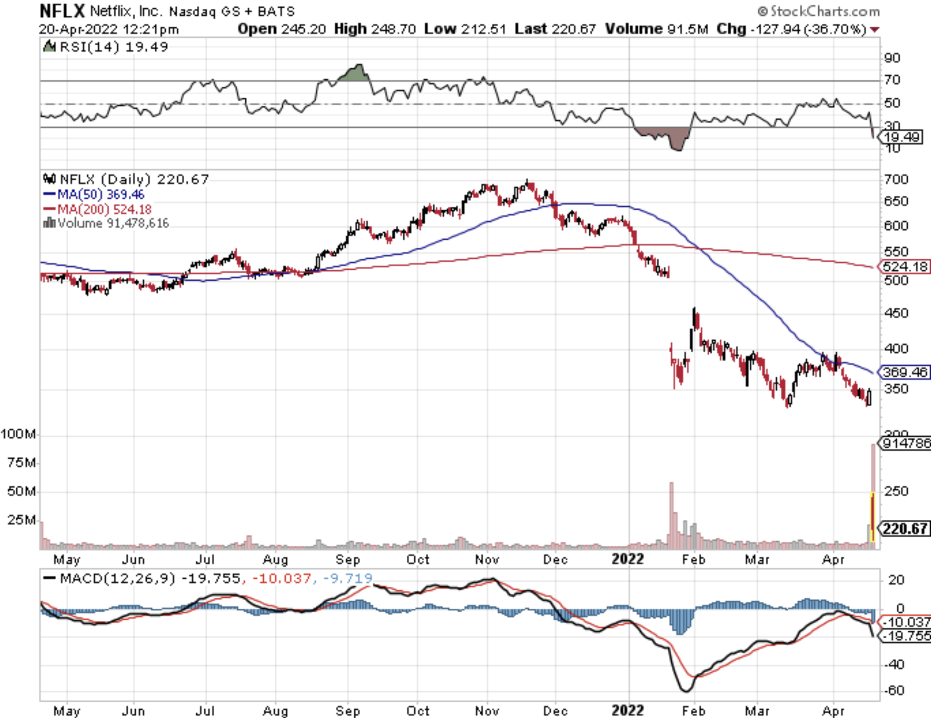
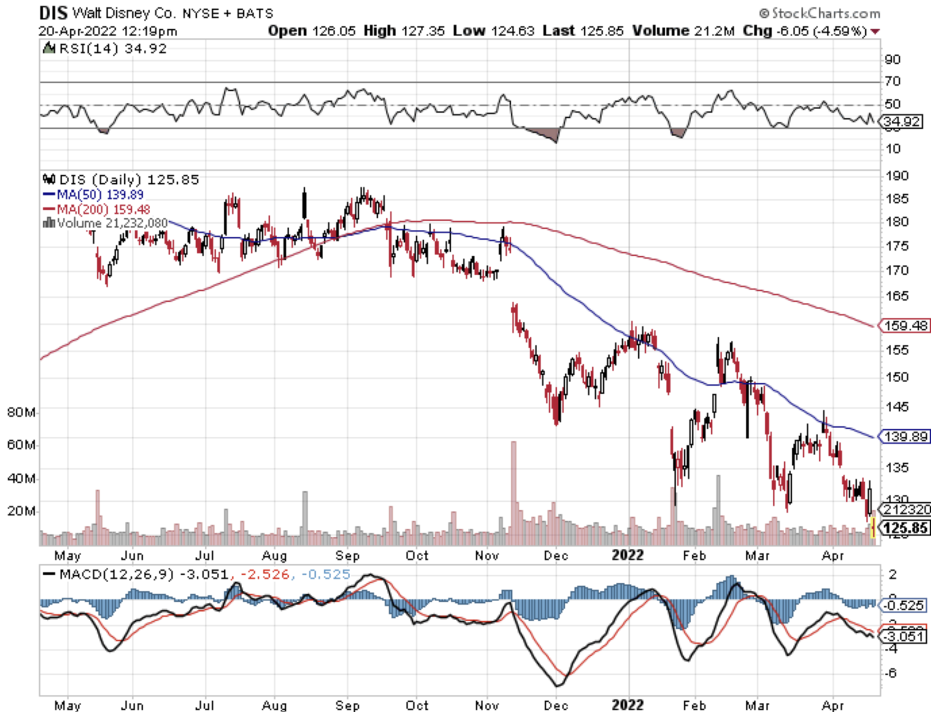
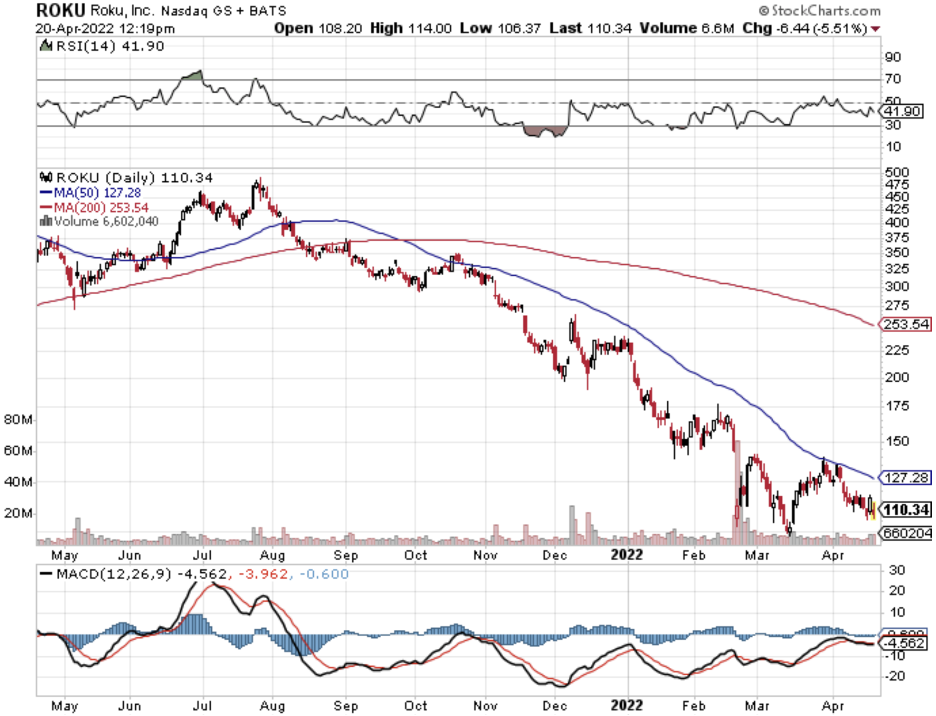
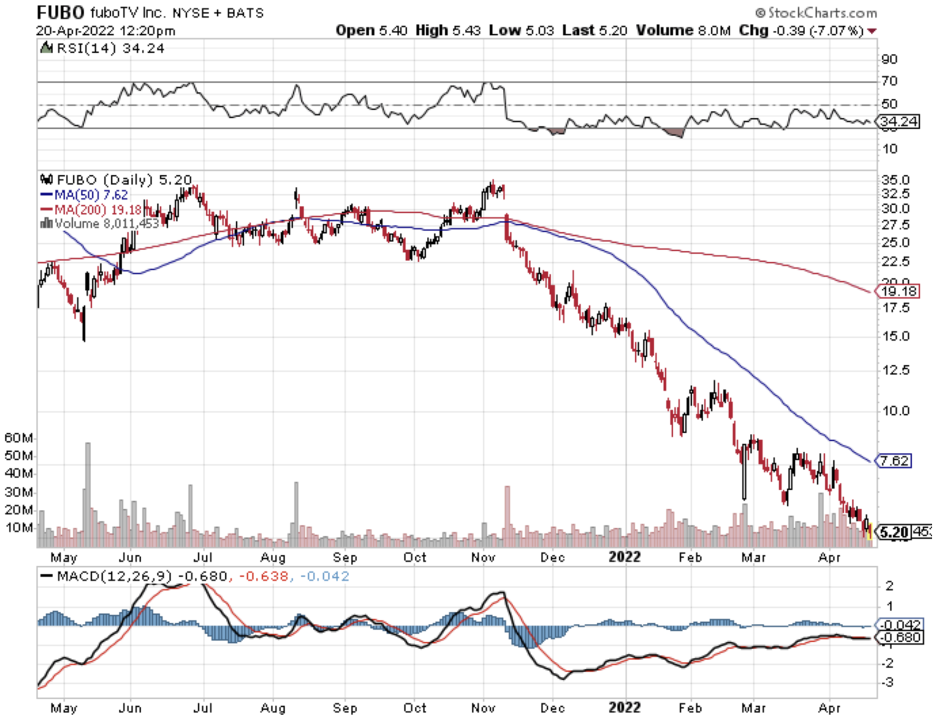
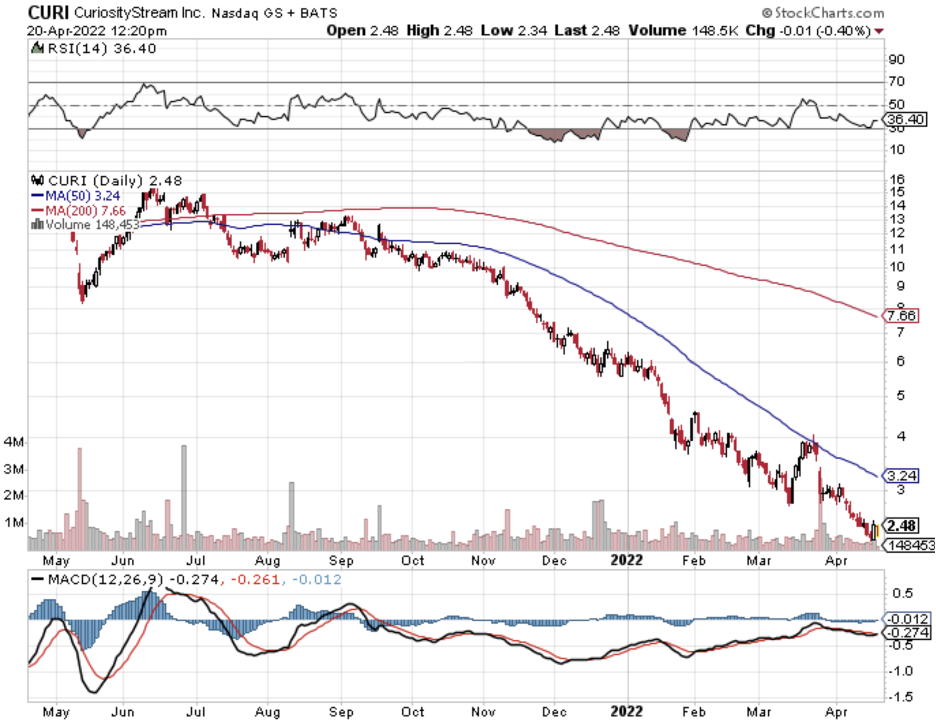
Mad Hedge Technology Letter
October 1, 2021
Fiat Lux
Featured Trade:
(CONNECTED TV IS ON FIRE)
(TTD), (DIS), (FUBO)

One of my favorite ad tech companies has to be The Trade Desk (TTD).
They are a middleman of sorts, using an in-house platform to match the inventory of digital ads with the advertisers themselves.
They have been extremely effective at harnessing data to deliver the right ads to the right people and many major streaming companies and Fortune 500 companies are reaching out to them to figure out how to deploy ads in the most systematic way possible.
Let’s just say there is a lot of slippage going on in the linear industry where wrong ad placement is common.
Performance of late has been strong in TTD — more of the world's top advertisers and their agencies signed up or expanded their use of TTD’s platform, which just continues to validate their business strategy.
Companies are now increasingly embracing the opportunities of the open Internet in contrast to the limitations of walled gardens.
The highlight of last quarter’s performance is led by Connected TV (CTV) and premium video.
What is CTV in advertising? CTV is short form, skippable online advertising targeted to relevant content channels and/or audience groups. Connected TV (CTV) refers to any TV that can be connected to the internet and access content beyond what is available via the normal offering from a cable provider.
The CTV growth coincides with a broad move from broadcast and cable to digital on-demand content that is happening all over the world.
CTV as a percentage of TTD’s business continues to grow very rapidly and is, by far, their fastest-growing channel.
Overall, total revenue was up 101% from a year ago to $280 million, significantly surpassing in-house expectations.
Growth occurred mainly because of TTD’s latest platform launch, Solimar, which is the result of more than two years of engineering work, and it addresses many of the opportunities in front of agencies and brands today.
Just to provide some context on growth in CTV, through just the first half of this year, the number of brands spending more than $1 million in CTV to TTD has already more than doubled year over year.
And it's not just larger advertisers that are taking advantage of CTV anymore. The number of advertisers spending over $100,000 has also doubled. In total, TTD has nearly 10,000 CTV advertisers, up over 50% compared to last year.
That exponential growth speaks to how rapidly the TV landscape is evolving. The accelerated consumer shift to digital video is real, including CTV. And that shows no signs of slowing down.
In fact, TTD reached more households via CTV in the U.S. today than are reachable through linear TV. Today, TTD reaches more than 87 million households. Those trends are now well established.
MoffettNathanson recently reported that the ad-supported video-on-demand market is growing from $4.4 billion in 2020 to about $18 billion as early as 2025.
And every major ad-supported platform, whether it's Disney's Hulu, Peacock, Discovery Plus, ViacomCBS' Paramount and Pluto, FOX's 2B or fuboTV and many others, all are reporting record viewership or ad spend figures.
Broadcasters recognize that the traditional upfront process is a mismatch. It doesn't work in a digital world where data and personalization are required to succeed.
The legacy upfront process is really hard to run in an environment with lots of change and lots of uncertainty. I believe that this year will mark a turning point in how the process is managed. In today's fragmented TV environment, linear audiences continue to erode, linear supply is shrinking and the prices are rising simply because of the scarcity. This year, broadcasters use that scarcity to their advantage and lock up commitments as the demand for growth intensifies.
When compared to parallel linear TV ad campaigns, CTV delivered a 51% incremental reach and a four times improvement when analyzing cost per household reach. These are not isolated cases.
Retail is a point of emphasis this year with Walmart integrating Walmart shopper data on TTD’s platform. This is a leading example of how TTD is working with advertising customers to help unlock the value of retail data estimated at $100 billion to $200 billion market.
This is a highly volatile stock and 2021 has been a year of consolidation.
If TTD comes down to $60 from the $70 today, that should represent an optimal entry point into one of the hottest sub-industries in tech.
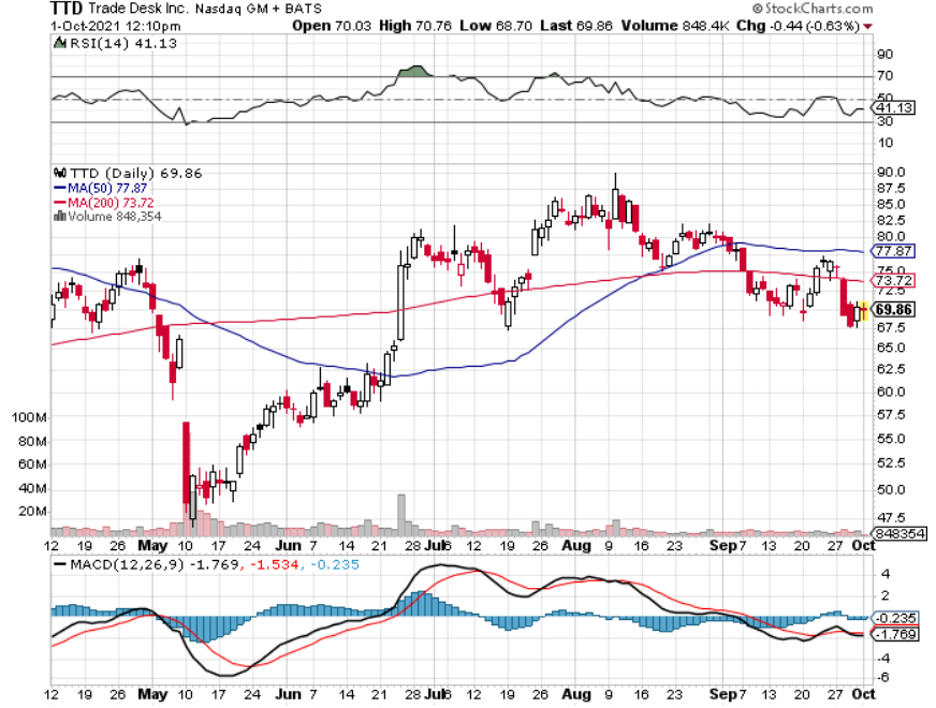
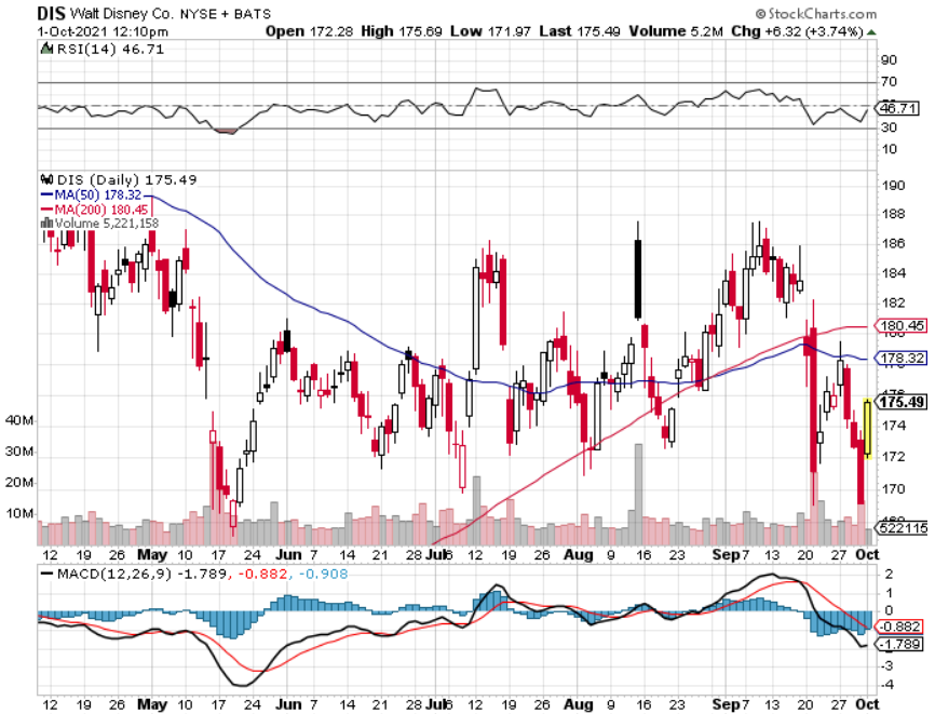
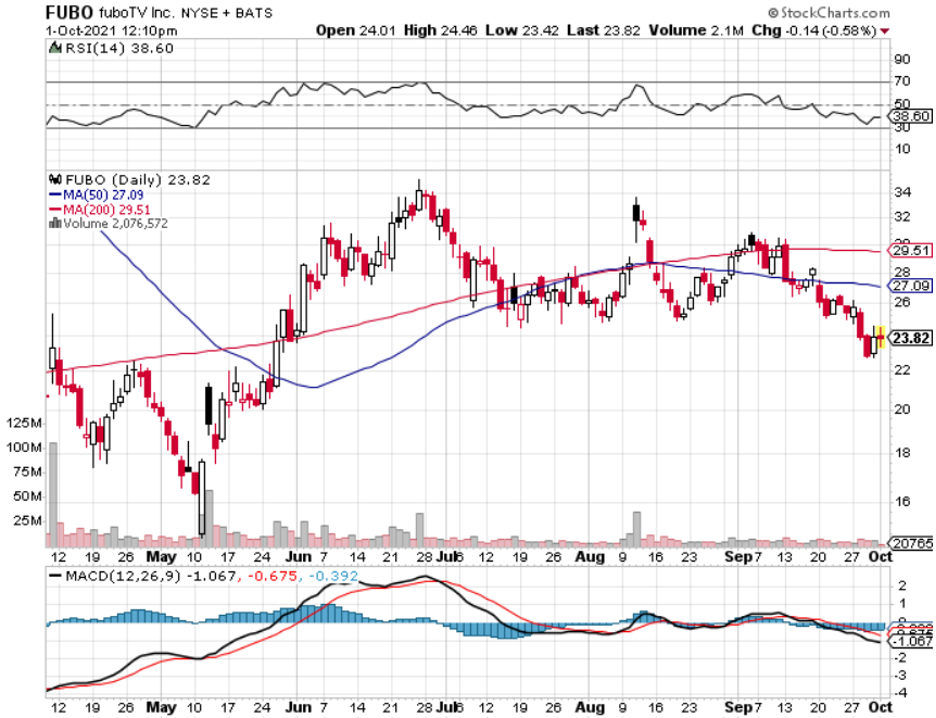
Mad Hedge Technology Letter
January 29, 2021
Fiat Lux
Featured Trade:
(THE OTHER STREAMING SERVICE)
(FUBO), (ROKU), (TTD)

I was going to hold off on writing about this streaming service, but the shares are up another 15% this morning on a down day and that has forced my hand.
Streaming platforms have done extremely well during the pandemic and it is a no-brainer to put two and two together because consumers stuck at home would obviously mean more streaming consumption.
But what about those streaming services that you have not heard about?
They do exist and now I am here to tell you about one of them.
Enter fuboTV (FUBO).
FuboTV is an American streaming television service that focuses primarily on channels that distribute live sports, including NFL, MLB, NBA, NHL, MLS, and international soccer, plus sports news, network television series, and movies.
Yes, I must admit that fuboTV isn’t the newest company. The company was established in 2015 and some of the hardcore streamers will see this service pop up on their Roku (ROKU) amongst other platforms.
After a more focused migration into live sports television, a key deal to bring Disney’s ESPN to its platform, and a pair of acquisitions to allow sportsbook operations beginning in 2021.
FUBO has potential and is already showing robust growth backed by the kind of subscriber numbers needed to turn an eventual profit.
November’s third-quarter print showed accelerating subscriber growth from 58% to 72% and sales surging from 71% to 80%.
I am quite positive on FUBO’s ability to monetize traffic at much higher rates than its competitors.
That includes streaming hardware darling Roku, which captures less than one-third of FUBOs per user ad revenue.
FUBO had just 545,000 subscribers entering into 2021, but its free-spending audience that totals an average of four hours a day streaming the platform is a bedroom piece of foundation to this upstart company.
It is generating an average $7.50 in monthly ad revenue per user, and that's on top of the $65 monthly fee for the entry-level plan featuring 118 different channels.
The big selling point for fuboTV is that more than three dozen of those networks are dedicated sports channels.
FUBO’s capture of ESPN last summer was a coup, but it also dropped Turner's sports-heavy properties.
It’s true that it is not the perfect service, and is missing some crucial content.
They are also not carrying Sinclair's regional sports channels.
Cord cutters are helping this stock be hard to bet against after joining the services in droves in 2020.
FUBO actually was laser-focused on European soccer at the beginning but understood they needed to branch out to capture other pro sports fans and widen its audience.
Unlike Netflix, advertising is a key component in the company's revenue. It works with top ad-tech companies like The Trade Desk (TTD) and Magnite, and these partnerships are helping it with growth.
In the third quarter, ad revenue grew 153% year over year.
FUBO's ad business is already far ahead of Roku's, perhaps demonstrating the greater monetization potential of live sports and TV compared to on-demand streaming.
FUBO believes it can generate more than $20 in ARPU after paying the third-party vendors it works with.
A net loss of $402.5 million through the first nine months of 2020 is standard for most teething growth companies and the unprofitability shouldn’t stop investors from this stock.
If you do choose to dip your toe into this stock, then be aware the volatility might make you feel unsteady at night.
The wild swings are a sign of an immature company growing into its investor base.
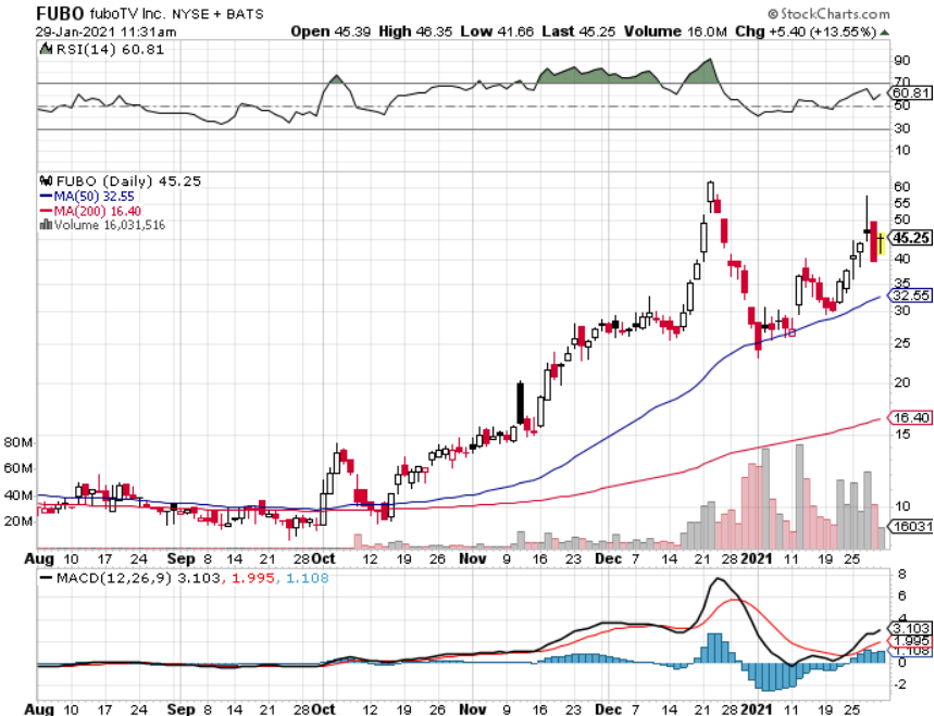
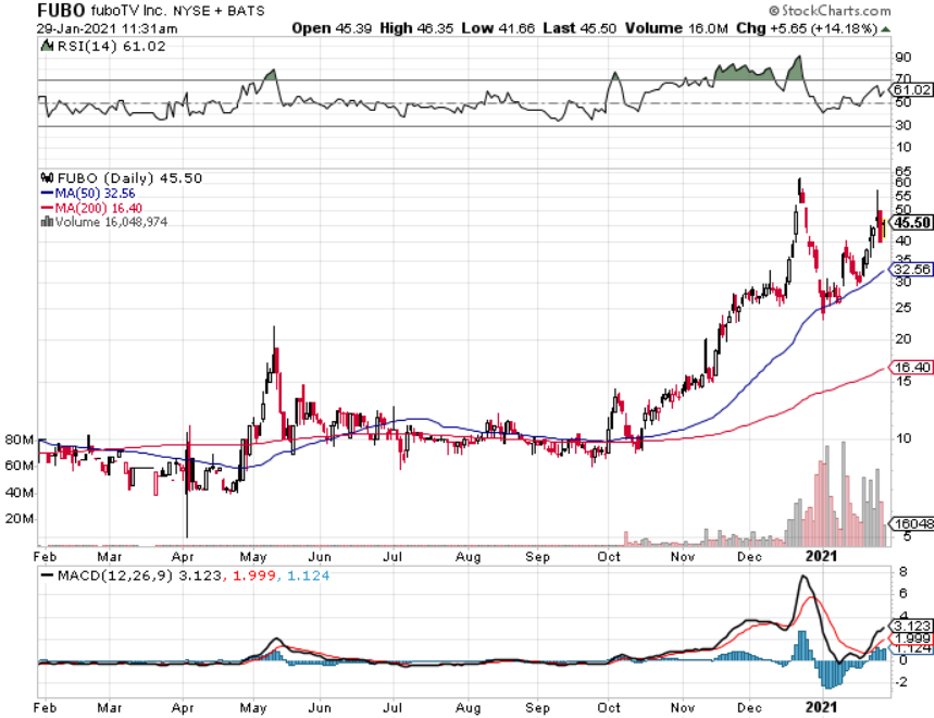
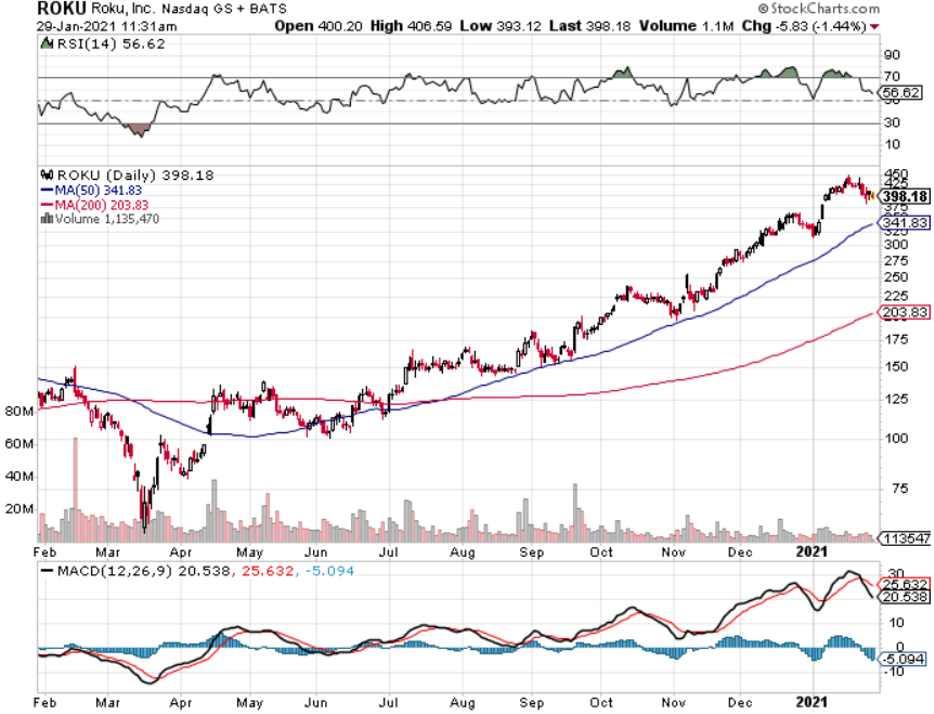
Legal Disclaimer
There is a very high degree of risk involved in trading. Past results are not indicative of future returns. MadHedgeFundTrader.com and all individuals affiliated with this site assume no responsibilities for your trading and investment results. The indicators, strategies, columns, articles and all other features are for educational purposes only and should not be construed as investment advice. Information for futures trading observations are obtained from sources believed to be reliable, but we do not warrant its completeness or accuracy, or warrant any results from the use of the information. Your use of the trading observations is entirely at your own risk and it is your sole responsibility to evaluate the accuracy, completeness and usefulness of the information. You must assess the risk of any trade with your broker and make your own independent decisions regarding any securities mentioned herein. Affiliates of MadHedgeFundTrader.com may have a position or effect transactions in the securities described herein (or options thereon) and/or otherwise employ trading strategies that may be consistent or inconsistent with the provided strategies.
This site uses cookies. By continuing to browse the site, you are agreeing to our use of cookies.
OKLearn moreWe may request cookies to be set on your device. We use cookies to let us know when you visit our websites, how you interact with us, to enrich your user experience, and to customize your relationship with our website.
Click on the different category headings to find out more. You can also change some of your preferences. Note that blocking some types of cookies may impact your experience on our websites and the services we are able to offer.
These cookies are strictly necessary to provide you with services available through our website and to use some of its features.
Because these cookies are strictly necessary to deliver the website, refuseing them will have impact how our site functions. You always can block or delete cookies by changing your browser settings and force blocking all cookies on this website. But this will always prompt you to accept/refuse cookies when revisiting our site.
We fully respect if you want to refuse cookies but to avoid asking you again and again kindly allow us to store a cookie for that. You are free to opt out any time or opt in for other cookies to get a better experience. If you refuse cookies we will remove all set cookies in our domain.
We provide you with a list of stored cookies on your computer in our domain so you can check what we stored. Due to security reasons we are not able to show or modify cookies from other domains. You can check these in your browser security settings.
These cookies collect information that is used either in aggregate form to help us understand how our website is being used or how effective our marketing campaigns are, or to help us customize our website and application for you in order to enhance your experience.
If you do not want that we track your visist to our site you can disable tracking in your browser here:
We also use different external services like Google Webfonts, Google Maps, and external Video providers. Since these providers may collect personal data like your IP address we allow you to block them here. Please be aware that this might heavily reduce the functionality and appearance of our site. Changes will take effect once you reload the page.
Google Webfont Settings:
Google Map Settings:
Vimeo and Youtube video embeds:
